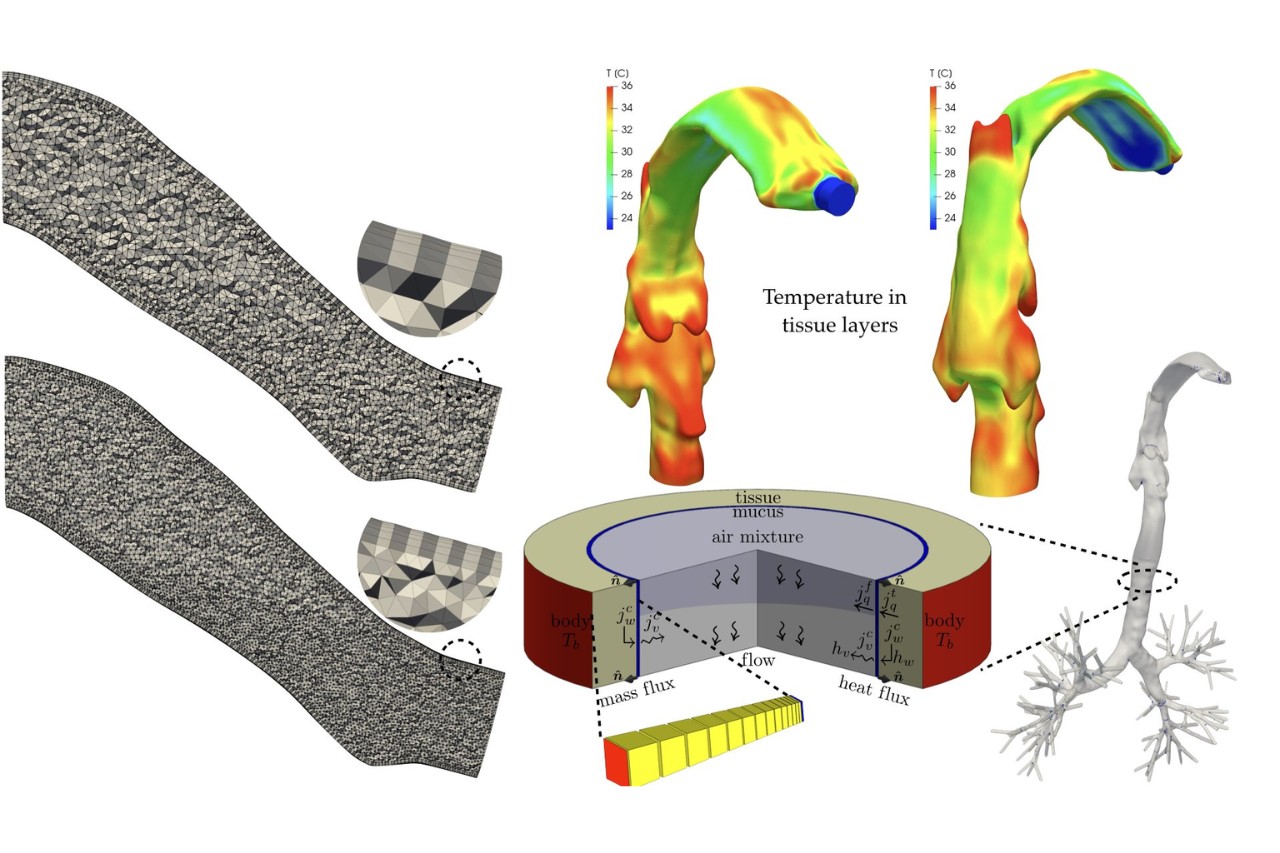
The world of chemistry is full of fascinating phenomena, and one such phenomenon that often goes unnoticed is hygroscopicity. Hygroscopicity refers to the ability of a substance to attract and retain moisture from the surrounding environment. It is a crucial property in various fields, from pharmaceuticals to construction materials.
In this article, we will explore 13 extraordinary facts about hygroscopicity that will not only deepen your understanding of this concept but also leave you amazed by the wonders of the chemical world. From the role of hygroscopic substances in humidity control to their impact on food preservation, we will uncover the intriguing aspects of hygroscopicity and its applications in everyday life.
So, get ready to delve into the captivating world of hygroscopicity and discover some incredible facts that highlight the unique properties and significance of these moisture-loving substances.
Key Takeaways:
- Hygroscopicity is like a superpower that allows substances to attract and hold onto moisture from the air, which can be both helpful and troublesome in different situations. It’s like a moisture magnet with pros and cons!
- Hygroscopicity affects everyday things like sugar, honey, and even cotton! It’s like a secret ingredient that can make products last longer or cause them to clump up. It’s like a sneaky moisture ninja!
Hygroscopicity is the ability of a substance to attract and hold moisture from the surrounding environment.
Hygroscopicity is a fascinating property exhibited by many substances, especially in the field of chemistry. When a substance is hygroscopic, it has the capability to absorb water molecules from the air, leading to changes in its physical and chemical characteristics.
Certain hygroscopic substances can absorb moisture even in extremely dry conditions.
One of the remarkable features of hygroscopicity is its ability to attract and retain moisture even in environments with low humidity levels. Substances such as silica gel, salt, and certain polymers have a high affinity for water molecules, allowing them to absorb moisture even in arid conditions.
Hygroscopic substances can be both beneficial and detrimental in various applications.
Hygroscopic materials find extensive use in a wide range of applications. In industries such as food processing, pharmaceuticals, and cosmetics, hygroscopic substances are utilized as humectants to retain moisture and prevent products from drying out. However, in other scenarios, the hygroscopic nature of certain materials can be problematic, causing moisture degradation, clumping, or corrosion.
Hygroscopicity plays a crucial role in weather phenomena such as dew formation and cloud formation.
The hygroscopic nature of particles in the atmosphere, such as dust, salt, and aerosols, significantly impacts weather phenomena. In the early morning, when the temperature decreases, hygroscopic particles can attract water vapor from the air, leading to the formation of dew on surfaces. Additionally, hygroscopic particles act as cloud condensation nuclei, allowing water vapor to condense and form clouds.
The hygroscopicity of substances can be quantified using the concept of water activity.
Water activity (aw) is a measure of the availability of water molecules in a substance. It is a unitless parameter ranging from 0 to 1, where 0 represents no available water and 1 represents pure water. By measuring the water activity, scientists can determine the level of hygroscopicity and the potential for moisture absorption in different materials.
Hygroscopicity can impact the stability and shelf life of products.
In industries such as pharmaceuticals, hygroscopicity is a crucial factor to consider during product formulation. Hygroscopic substances can absorb moisture from the environment, potentially causing chemical reactions or physical changes in the product. Controlling hygroscopicity is essential to ensure product stability and prolong shelf life.
Common hygroscopic substances include sugar, honey, and glycerin.
Many everyday substances exhibit hygroscopic properties. Sugar and honey, for example, readily absorb moisture from the air, which can lead to clumping if not properly stored. Glycerin, commonly used in skincare products, acts as a humectant, attracting moisture to help the skin retain hydration.
Hygroscopicity is influenced by factors such as temperature, humidity, and surface area.
The level of hygroscopicity exhibited by a substance can be influenced by various factors. Higher temperatures generally increase the rate of moisture absorption, while lower humidity levels can enhance the hygroscopic properties of a substance. Additionally, an increased surface area provides more opportunities for water molecules to interact with the material.
Hygroscopicity can be utilized in the development of humidity control systems.
Hygroscopic materials have practical applications in humidity control systems. Substances like desiccants, such as silica gel or calcium chloride, can effectively absorb excess moisture from the air in enclosed spaces, preventing damage to sensitive equipment or preventing mold growth.
The hygroscopic behavior of substances can be modified through chemical treatments or coatings.
To reduce or enhance the hygroscopicity of a material, various chemical treatments or coatings can be applied. Chemical compounds like silanes or hydrophobic coatings can transform a hygroscopic substance into a hydrophobic one, reducing its water absorption properties.
Hygroscopicity is a critical consideration in the preservation of artifacts and cultural heritage.
In museums and preservation facilities, controlling the hygroscopicity of materials is essential to prevent damage to valuable artifacts. Fluctuations in moisture levels can lead to the deterioration of paper, wood, and other vulnerable materials, making proper humidity control crucial for long-term preservation.
The hygroscopic nature of cotton fibers is attributed to the presence of hydroxyl groups in the cellulose structure.
Cotton, a widely used natural fiber, exhibits notable hygroscopic properties. The presence of hydroxyl (-OH) groups within the cellulose structure of cotton fibers allows them to attract and retain moisture, contributing to the comfort and breathability of cotton-based fabrics.
Hygroscopicity is an essential consideration in the storage and handling of chemicals.
When dealing with hygroscopic chemicals, proper storage and handling are crucial. Substances such as certain salts, acids, or bases can absorb moisture from the environment, potentially leading to hazardous situations or affecting the chemical properties of the materials. Maintaining proper moisture control is vital to ensure the stability and safety of hygroscopic chemicals.
Conclusion
In conclusion, the phenomenon of hygroscopicity is truly fascinating and has numerous applications in our everyday lives. From the ability of certain substances to attract and absorb water molecules to the way it influences the stability and effectiveness of various products, hygroscopicity plays a crucial role in many fields, including chemistry, pharmaceuticals, food preservation, and even in the preservation of historical artifacts.By understanding the principles of hygroscopicity, scientists and researchers can develop new materials and technologies that capitalize on this unique property. Whether it’s the desiccants in packaging to keep products dry, the moisture-absorbing properties of salts in industrial processes, or the use of hygroscopic compounds in humidity control systems, the applications are truly limitless.As we continue to explore and uncover more about hygroscopicity, we are bound to find even more extraordinary facts and practical uses for this remarkable phenomenon. The study of hygroscopicity not only expands our knowledge of the natural world but also paves the way for innovations and advancements that improve our quality of life.
FAQs
Q: What does it mean for a substance to be hygroscopic?
A: Hygroscopicity refers to the ability of a substance to attract and absorb water molecules from its surroundings.
Q: What are some examples of hygroscopic substances?
A: Common examples include salt, sugar, honey, silica gel, and certain metals such as lithium and sodium.
Q: How does hygroscopicity affect the stability of products?
A: Hygroscopic substances can influence the stability of products by either promoting or inhibiting moisture absorption. This can impact the shelf life, texture, and overall quality of various items.
Q: What are desiccants, and how are they used?
A: Desiccants are substances with high hygroscopicity that are used to remove moisture from the surrounding environment. They are commonly found in packaging to prevent damage caused by humidity.
Q: Can hygroscopic substances be used for humidity control?
A: Yes, hygroscopic compounds like calcium chloride and zeolites are frequently used in humidity control systems to absorb excess moisture from the air and maintain desired humidity levels.
Q: Are there any drawbacks to hygroscopicity?
A: One major drawback is that hygroscopic substances can become clumpy or dissolve when exposed to high humidity, which can affect their functionality and usability.
Q: How is hygroscopicity relevant in the preservation of historical artifacts?
A: Hygroscopic materials, such as silica gel, are commonly used in museum storage to absorb moisture and prevent damage to delicate artifacts caused by fluctuating humidity levels.
Q: Can hygroscopicity be utilized in the pharmaceutical industry?
A: Absolutely. Hygroscopic compounds are often employed to enhance drug stability, control moisture content in pharmaceutical formulations, and ensure the efficacy of medications.
Q: Is hygroscopicity only relevant in scientific and industrial settings?
A: No, hygroscopicity has practical implications in our daily lives as well. From the clumping of sugar in humid environments to the use of dehumidifiers in homes, we experience its effects regularly.
Q: Can the hygroscopic properties of certain materials be harnessed for energy storage?
A: Yes, some researchers are exploring the potential of using hygroscopic materials for energy storage due to their ability to capture and release water vapor, which can be converted into usable energy.
Hygroscopicity's fascinating nature leaves you thirsting for more knowledge. Quench that thirst by exploring desiccants, substances that attract moisture like magnets. Dive deeper into the world of water-loving materials with deliquescence, where solids transform into liquids. Finally, broaden your horizons with material science, uncovering secrets behind everyday objects and cutting-edge innovations. Each topic offers a unique perspective on the captivating interplay between matter and moisture. Embark on this journey of discovery, and you'll never look at the world around you the same way again.
Was this page helpful?
Our commitment to delivering trustworthy and engaging content is at the heart of what we do. Each fact on our site is contributed by real users like you, bringing a wealth of diverse insights and information. To ensure the highest standards of accuracy and reliability, our dedicated editors meticulously review each submission. This process guarantees that the facts we share are not only fascinating but also credible. Trust in our commitment to quality and authenticity as you explore and learn with us.


